Stop signs reinstalled at 7th & Dunn in Bloomington
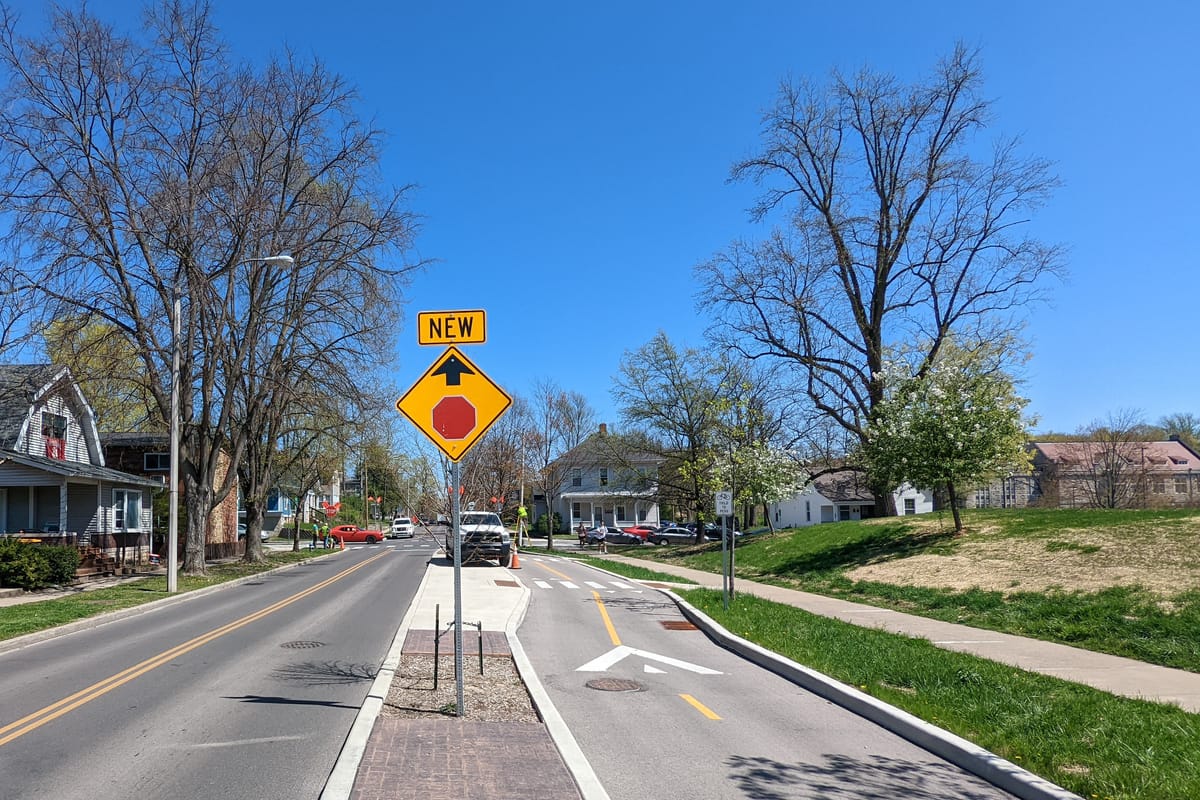
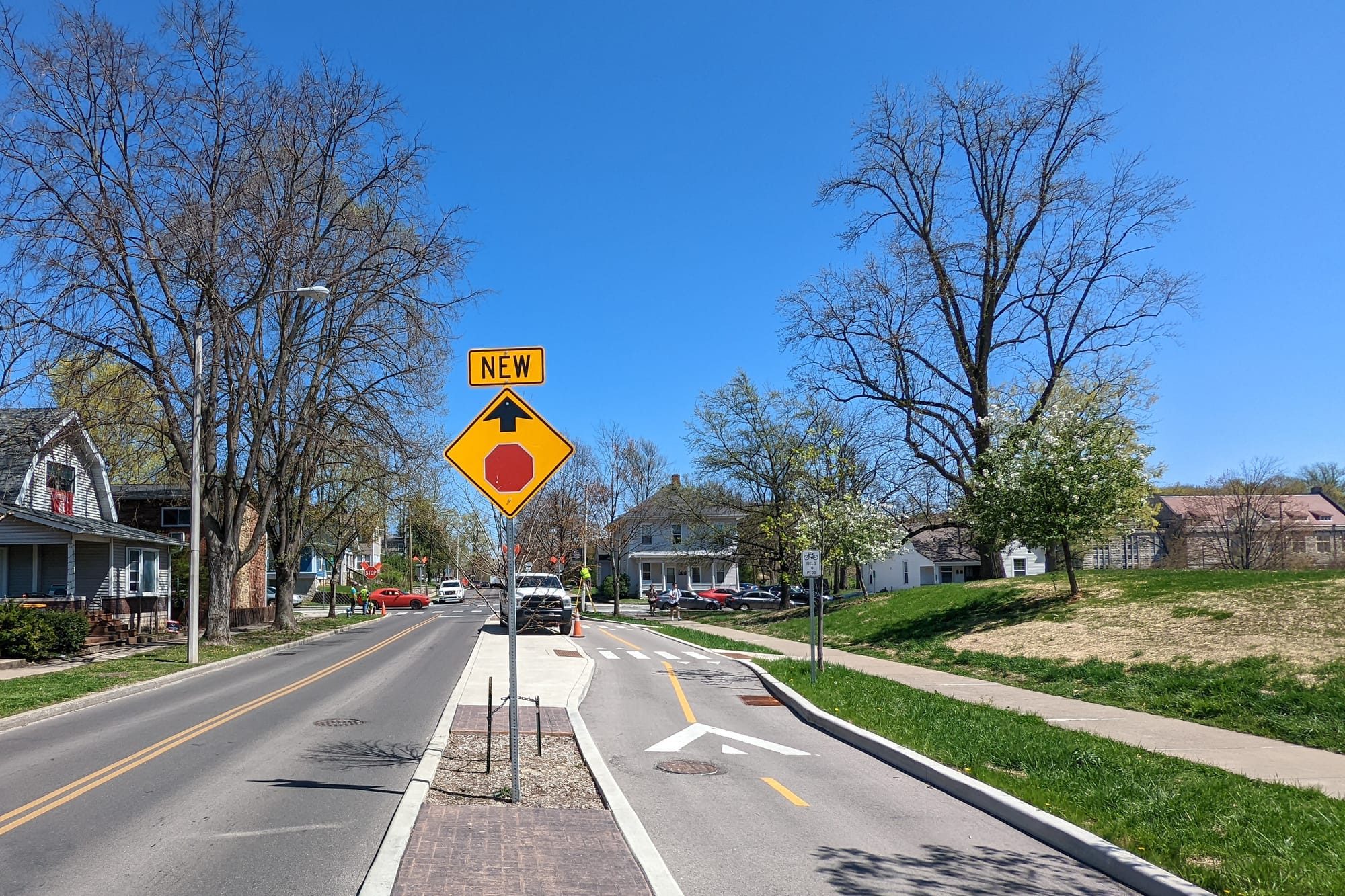
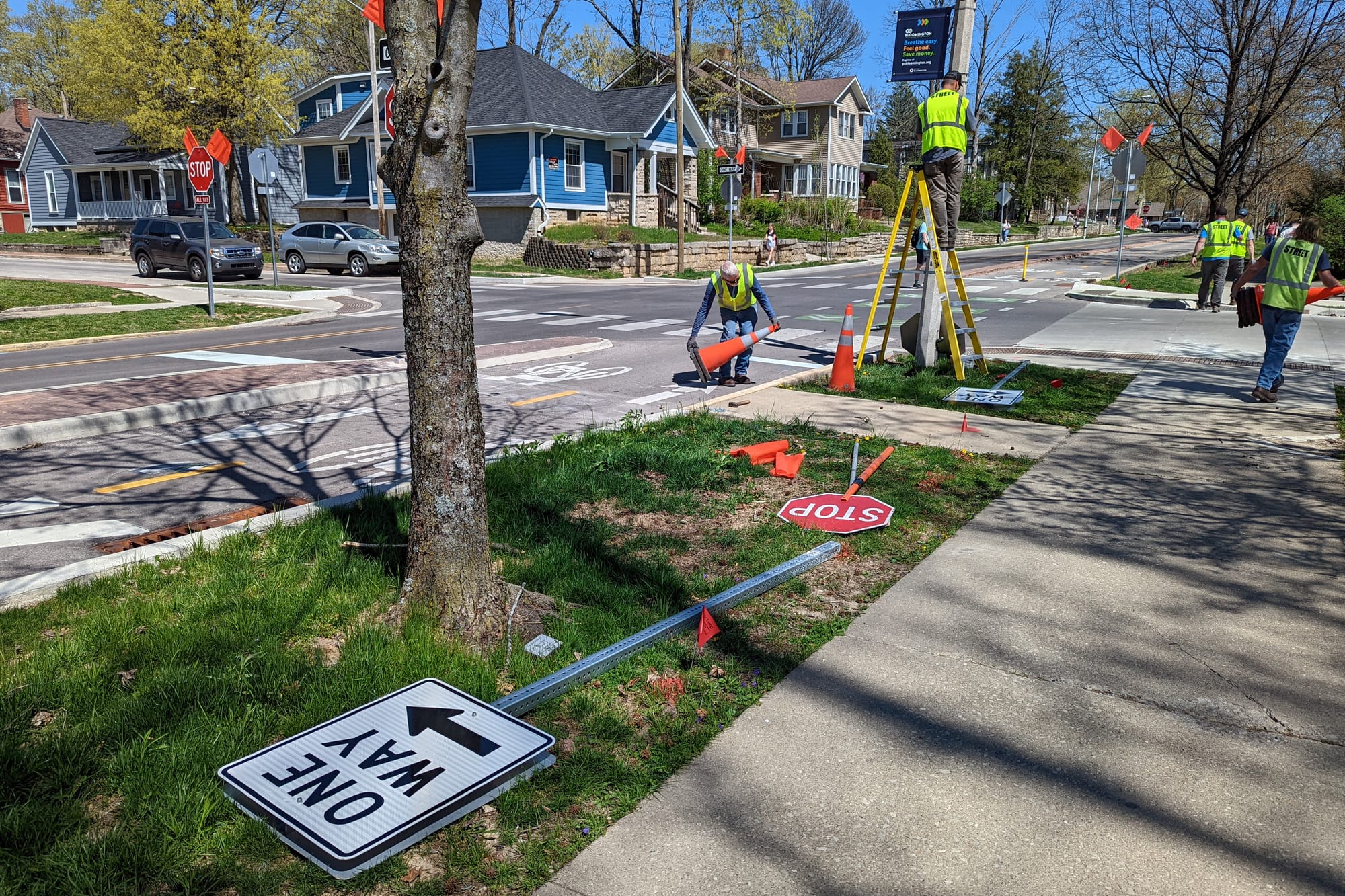

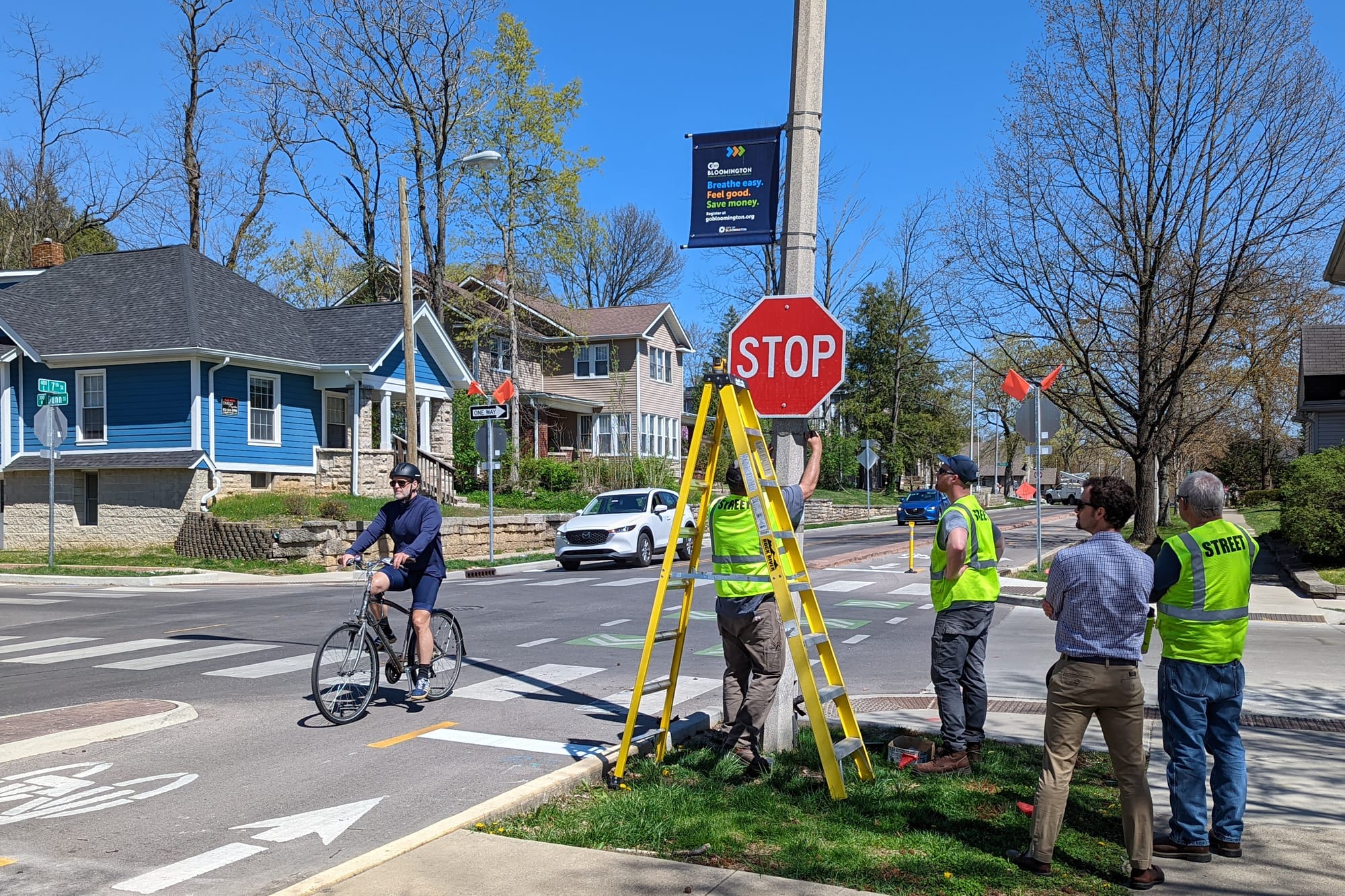


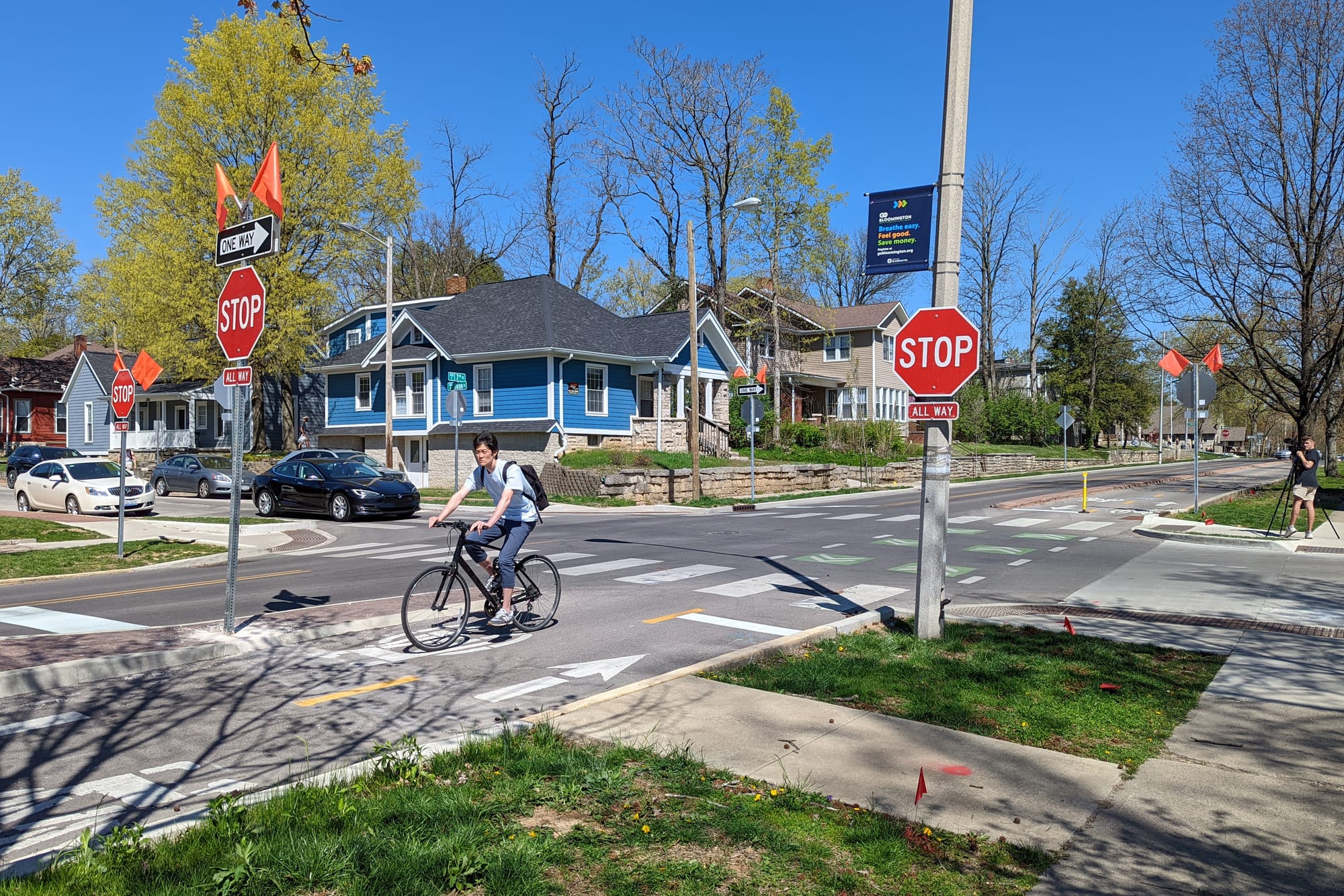

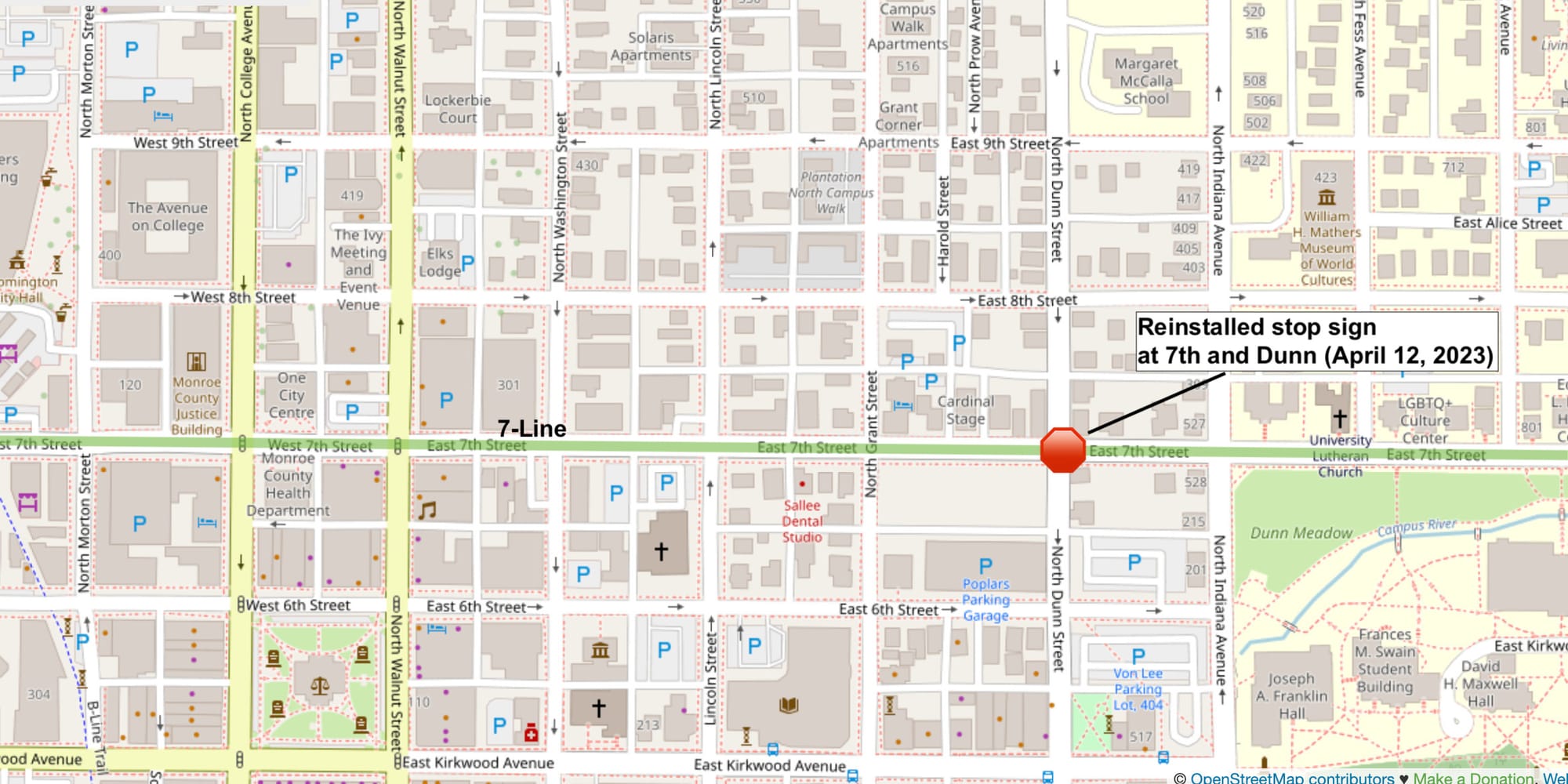
Around 10 a.m. on Wednesday, a yellow-vested crew from the street division of Bloomington’s department of public works started drilling holes to reinstall stop signs for 7th Street traffic at Dunn Street.
The work was finished by around 3 p.m. That makes the intersection at Dunn and 7th, just west of the Indiana University campus, an all-way stop.
The stop sign went in, because city engineer Andrew Cibor used his legal authority, to order the placement of the stop signs for 180 days.
Cibor’s order is based on a study of crashes along the 7th Street corridor, before and after the 7-Line separated bicycle lane was installed in 2021. The study showed an increase in crash numbers, especially at the intersection of Dunn and 7th Street.
The idea behind removal of the stop signs was to reduce the effort for cyclists in the corridor and to encourage the use of the new lane by cyclists.
Based on the crash numbers, Cibor had recommended that all five 7th Street stops that were removed in connection with the 7-Line construction be reinstalled. But the city’s bicycle and pedestrian safety commission (BPSC) supported the reinstallation of just one stop—at the intersection of Dunn and 7th Street. And the city’s traffic commission agreed with the BPSC.
By around 3 p.m. on Wednesday, the new stop signs were installed, along with some advance warning signs alerting drivers and cyclists to the upcoming new stop sign. The new stop signs themselves are also augmented with criss-crossed flags on top.
On Wednesday, Cibor was out on site to document the work photographically and to touch base with the street division crew.
Walking past the intersection as the new stops went in was Indiana University senior Audrey Killian, who told The B Square she was glad to see the signs going in, because she thinks it will make the intersection safer.
Killian is familiar with 7th and Dunn. She said, “I walk past this intersection every single day on my way to class—or I ride my bike.” She continued, “I frequently drive through this intersection as well.” Killian said, “I’ve seen no less than two new crashes since I’ve lived here.”
The crashes Killian witnessed were between two cars.
Killian thinks that part of the challenge is that drivers often don’t see bicycles as a “valid vehicle.”
After the stop signs were removed, Killian said, many 7th Street drivers at Dunn Street continued to stop for Dunn Street car traffic, in addition to pedestrians—which contributed to the perception that it was still an all-way stop. So the reinstallation of the stop signs will square up with what many drivers already perceive, she said.
About the additional physical effort required from cyclists, Killian said, “Yes, it’ll be a little challenging for cyclists, just because it is frustrating having to stop and restart.”
Balanced against that, Killian said, is the potential improvement in the visibility of cyclists to motorists. “I think it could also actually increase visibility of cyclists, because if you are stopped at the stop sign, and they have to stop, they see you.”
After the stop signs were installed on Wednesday, compliance by motorists and bicyclists appeared to be good, but not perfect.
For permanent installation, city council action is needed, just like it was to remove the stop signs.
The permanent installation of the 7th and Dunn stop signs is expected to be put in front of the city council on May 10, according to a news release issued by the mayor’s office.




Comments ()